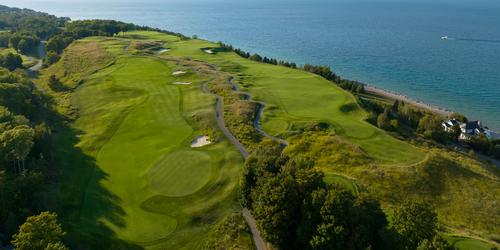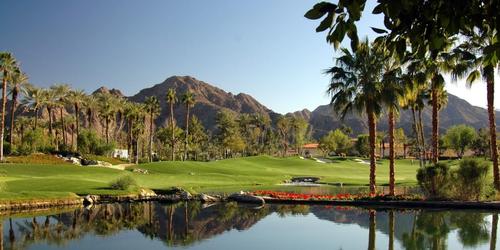A Wee Note From Scotland: The Old Course
A Wee Note From Scotland: The Old Course
By Charlie Mandel
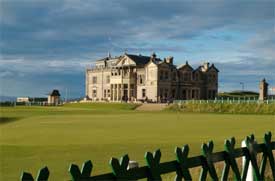
Who built the Old Course? When was the Old Course built?
the old course
Let us begin by answering the second question first. The short and very simple answer is that there is no historically recorded date when the Old Course came in to existence. Although there is a mention of the fact that Golf was banned by James II in 1457 (it interfered with archery practice which was an important skill for defending the realm) it is highly likely that golf, in some form or other, was played on the ground known as St Andrews Links or Plumier Links for many years before that.
Links is the term used to define that area of land between the sea and the arable land of the interior. It was good for nothing other than rough grazing and play. Tradition has it that Dutch merchants, on seeing the Scottish shepherds hitting small stones with their crooks, uttered the word 'kolf' which was a similar game they played, with the difference that their objective was to hit a target and not to sink the ball into a hole in the ground - the unique characteristic of Scottish golf. As a final comment on the origins of the Old Course, it should be noted that it acquired that title only in 1895 when the New Course was built - by Old Tom Morris.
Moving on to the actual shape and character of the course, it should be noted that there were several important stages to the evolution of the Old Course as we know it today. No-one actually built or designed the Old Course but there were several notable contributions to this process- not least of which was the above mentioned Old Tom Morris.
the old course
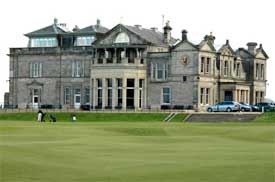
Originally, between 1754 and 1764, The Royal and Ancient Golf Club played over 22 holes - 11 holes out and the same 11 coming back. In 1764 it was felt that the first holes were too short so the first four holes were converted into two, reducing the course to 18 holes. It is an indication of the prestige and standing accorded to the R&A that 18 holes became the standard for golf courses worldwide. Golf courses were constructed on the basis of the land available. Prestwick, for example, where the first Open was held in 1860, had 12 holes and Blackheath, where the first Grand National Tournament (the precursor of the Open) was held in 1856, had only 5.
Due to the increasing popularity of golf, play on the St Andrews Links became more and more congested. In 1857 therefore, under the direction of Alan Robertson, ball maker and top golfer of his generation, seven double greens were made so that the same greens could be used by two sets of players simultaneously - those going out and those coming back.
In 1864, Tom Morris became Keeper of the Green - a position he held until 1903. He introduced several refinements to the course and its use, not least of which is that there is no golf played on the Old Course on Sundays. Pilgrims to the hallowed turf are often astounded by the sight of families picnicking and people strolling across the greens and fairways, but that is the tradition and so it will remain!
By 1875, most holes had defined teeing grounds - previously the tee-off was about 2 golf club lengths from the previous hole. In general the years have witnessed many changes. Improved greenkeeping technology has probably contributed most but, essentially, the Old Course remains what it always was - a subtle, undulating stretch of links grassland containing 112 bunkers and a challenge for any golfer.
There is one more thought I would like to share with you. When most people think of the Old Course, they think of the magnificent R&A Clubhouse as part of the amphitheatre formed by the 1st tee and 18th green. This building has an interesting history.
In 1803, St Andrews Town Council sold the links (it is now public land through various complicated processes and Acts of Parliament) to Charles and Cathcart Dempster. The Council had huge debts and needed the money - an early credit crunch! The local people still had the right to play on the links but they came up against a problem*. The Dempsters decided to use the links for commercial rabbit breeding with consequences all too easy to imagine! The rabbits ruined the golf course making it ' entirely useless for golfing.' Thus began a prolonged legal dispute which was to cost the Council even more money.
the old course
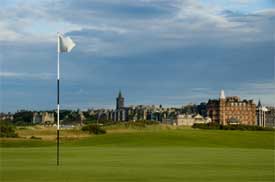
When a further legal dispute between the Council and R&A loomed, over house building adjacent to the eighteenth hole, the Council was at its wit's end. To try to extricate itself from the legal quagmire, it proposed 'to allow the Golf Club a piece of ground on the east of the present first hole for the site of a new Golf House when they shall think it proper to erect same.' It would be nearly forty years before the Clubhouse was built.
Rabbits, in one way or another have continued to play a significant part in the game of golf. I myself have had to deal with their presence on the golf course. I once killed a rabbit during a game - unintentially of course! It was a topped tee shot at a par three. When I found my ball, it was lying beside a rabbit which had met a swift and no doubt unexpected end. Without the martyrdom of the rabbit the ball would have gone 20 yards through the green. As it was, the ball ended up 3 feet from the hole and I ended up with a birdie 2.
Rabbit scrapings, to this day, are one of the hazards from which golfers can take relief and a free drop. How ironic that the rabbits' unrestrained rampaging over St Andrews Links should have led to the construction of one of the greatest icons in the World of Golf!
* The following adaptation of the consequences of the so called "Rabbit Wars" was inspired by the Art and Architecture of the Royal and Ancient Golf Club by Peter M. Lewis; Fiona C. Grieve and Keith Mackie
Article Tags: Scottland Golf
Revised: 08/03/2010 - Article Viewed 29,269 Times
About: Charlie Mandel
![]() "What is it that Rankmark does"" ...is a question I have been asked thousands and thousands of times during the last 10 or 12 years. I reply, "We test golf clubs." "You what"", they ask again. We produce the consumer reports of golf; golfers want to know which driver, which putter, or which wedge is best.
"What is it that Rankmark does"" ...is a question I have been asked thousands and thousands of times during the last 10 or 12 years. I reply, "We test golf clubs." "You what"", they ask again. We produce the consumer reports of golf; golfers want to know which driver, which putter, or which wedge is best.
For this test, we have gathered up hundreds of golfers at every conceivable skill level, had them hit and compare the newest long distance blasters to their own well-worn drivers. After all, the manufacturers imply or claim that their newest ($299, $399, $499) driver will hit the ball higher, straighter, or good lord... further.
Driver Test Charlie Mandel
Always remember that using a club you like will make for a better swing, and a better swing will almost invariably help you hit 'em long and straight!
Until then I remain,
"The Bogey Man"
Charlie Mandel
Contact Charlie Mandel:
Rankmark - Founder
(727) 741-0884







